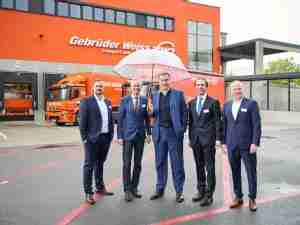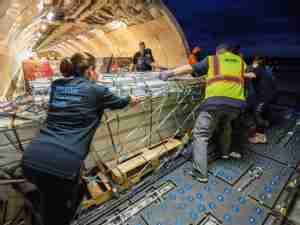Transportation & logistics M&A activity accelerates in the second quarter of 2014
posted by AJOT | Aug 04 2014 at 05:22 PM | Logistics
Merger and acquisition (M&A) activity in the transportation and logistics industry accelerated in the second quarter of 2014, with the total volume and value of deals increasing over the first quarter of 2014, as well as the second quarter last year, according to PwC US. Still, overall M&A activity in the sector year-to-date remains subdued compared to historical standards.
There were 51 transportation and logistics transactions worth $50 million or more in the second quarter of 2014, totaling $20 billion, compared to 38 deals worth $16.2 billion in the first quarter of 2014. Second quarter 2014 M&A activity also increased over the comparable period in 2013, which recorded 39 deals valued at $16.6 million.
“Transaction volume picked-up in the transportation and logistics industry during the second quarter although overall levels remain modest compared to historical norms,” said Jonathan Kletzel, U.S. transportation and logistics leader for PwC. “Management teams continue to take a measured approach to M&A and remain primarily focused on local deals aimed at consolidating existing markets and strengthening their core businesses. Similar to what we saw at the start of the year, deal activity was primarily driven by increased activity in the shipping and trucking sectors, with an emphasis on addressing overcapacity, fragmentation and sourcing higher margin services. Looking ahead, we believe transportation and logistics M&A activity will increasingly focus on higher margin, ancillary operations, including assets that benefit supply chain economics and lead to improved operating efficiencies.”
Mega deals (transactions worth $1 billion or more) remained low in the second quarter, contributing to the decrease in average deal value, which dropped to $393 million in the second quarter of 2014, compared to $427 million in the first quarter of 2014 and $425 million in last year’s second quarter. There were three mega transactions in the second quarter of 2014 with a total deal value of $9.63 billion compared to four mega deals in the first quarter worth $9.39 billion. Two of the mega deals in the second quarter occurred in Australia, and the other deal occurred in the U.S.
Overall, acquirers remained primarily focused on local market deals, with 2014 being on pace to be one of the weakest years for cross-border activity over the past decade. Local deals accounted for 71 percent of deal activity during the second quarter, compared to 76 percent in the first quarter and 69 percent in the comparable period last year. Emerging market acquirers in particular have focused on consolidating their local markets. According to PwC, motivations for these acquirers include the relative fragmentation, and, in some cases, higher return possibilities within these nations.
Acquirers from Asia and Oceania continued to be the most active of any region in the second quarter, accounting for 22 transactions, followed by the Eurozone which involved 14 deals. The U.S. market recorded only nine transactions during the second quarter, as activity remained below pre-financial crisis levels.
Deal multiples are moving to new highs this year, continuing their march upward since the global recession. The general increase in equity market valuations has contributed to higher deal valuations, while infrastructure deals, which tend to carry above-average multiples, remain popular. Two of the three mega deals in the second quarter were infrastructure transactions.
The level of financial investment also grew in the second quarter. Financial investors accounted for 51 percent of all deals worth $50 million or more during the second quarter, surpassing the 42 percent recorded in the first quarter this year. According to PwC, the strength of the capital markets continues to provide financial investors with favorable debt financing and private equity continues to source deals in shipping and trucking.
Recent M&A trends suggest that the overall sector is taking steps to improve performance through consolidation within underperforming modes and in emerging markets. “While there is still some risk aversion on the part of acquirers, there is a healthy appetite for a more narrow set of targets as indicated by increasing valuations,” Kletzel continued. “Over time, we expect shipping, trucking and infrastructure deals to lead M&A activity in the transportation industry. We also see a strong rationale for cross-border minority stakes by airlines, as acquirers attempt to boost access to international markets and targets seek to improve their finances. As a result, we expect a modest recovery in M&A announcements during the second half of 2014.”









